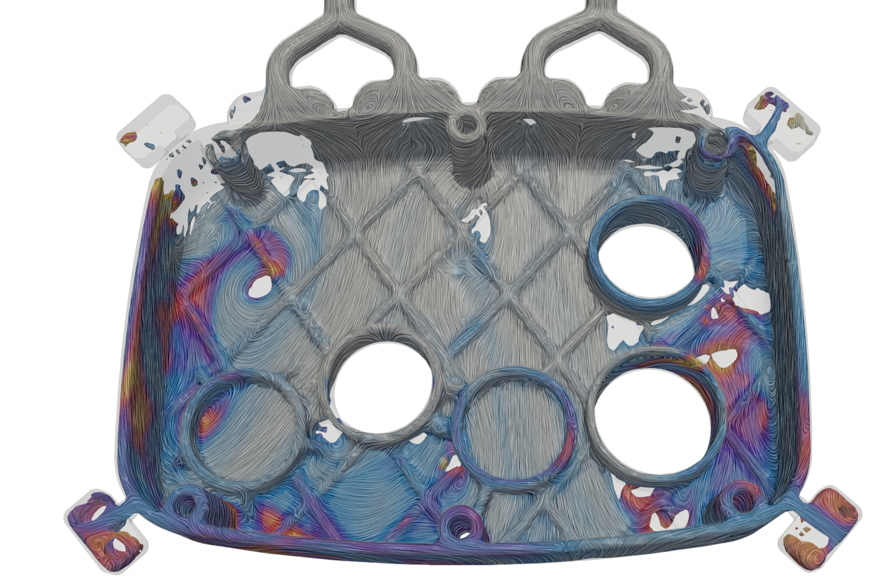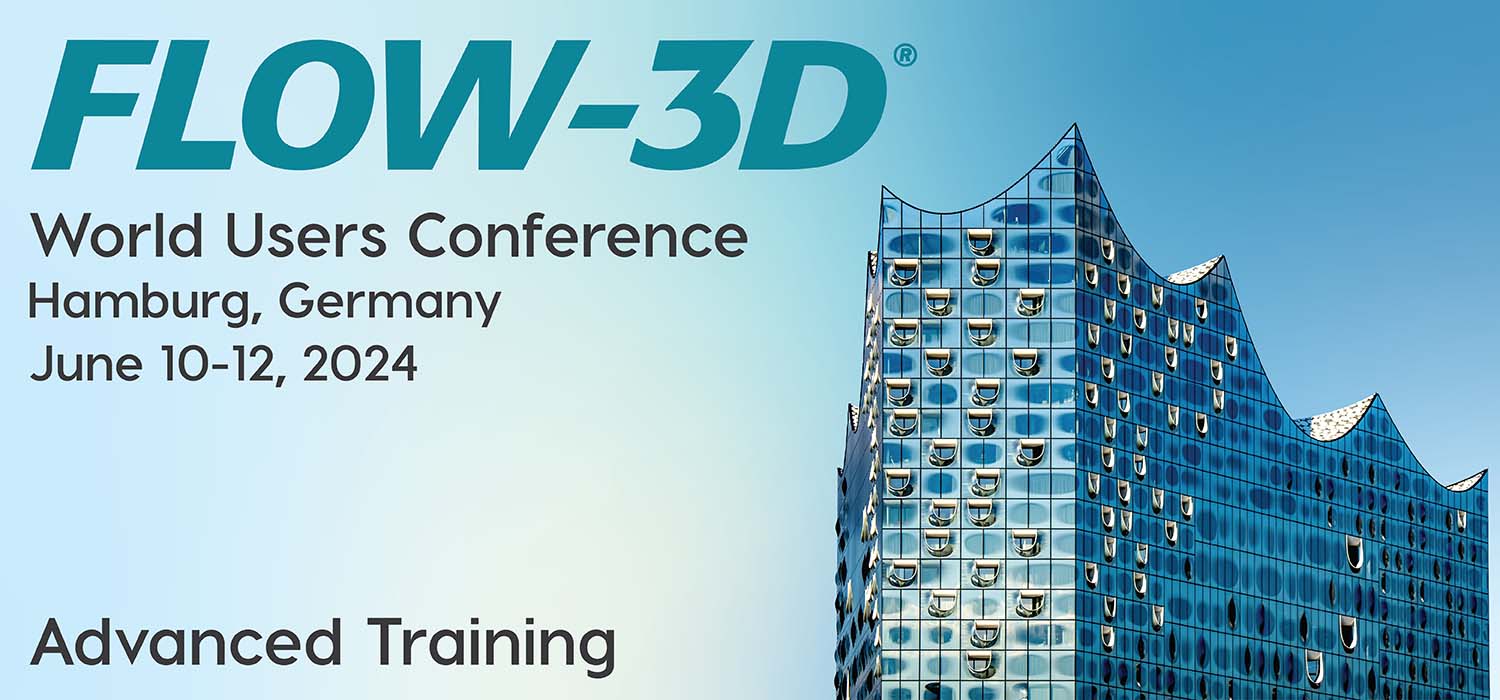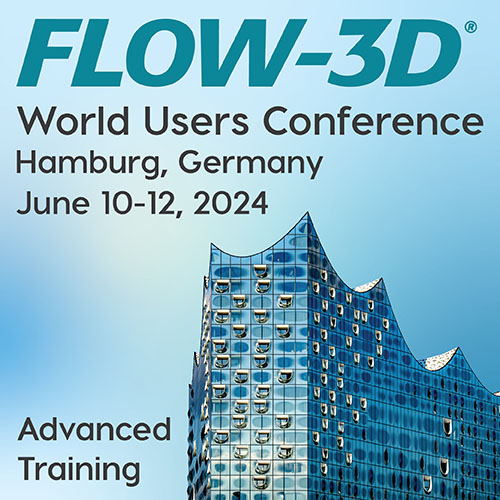
Flow Science will be holding three advanced training sessions the afternoon of Monday, June 10 to kick off the FLOW-3D World Users Conference. The trainings are free for all conference registrants. The training will be followed by the opening reception, which will be held in the restaurant of the conference hotel.
Schedule for Monday, June 10
- 13:00-15:00: FLOW-3D HYDRO training or
- 13:00-15:00: FLOW-3D AM and FLOW-3D WELD training
- 15:00-15:30: Coffee break and refreshments
- 15:30-17:30: FLOW-3D POST training
- 18:30-21:00: Opening reception
Advanced Simulation Techniques in FLOW-3D HYDRO
Instructor: Dr. Ryan Jones
Time: 13:00-15:00
Advanced training with FLOW-3D HYDRO will feature a review of software updates relevant to FLOW-3D HYDRO users. Training topics will include incorporating verification and validation into your application-specific workflow. Specific examples will include the air entrainment model for plunging jet, surface, and subsurface air entrainment flows; the sediment transport model for scour potential analysis; and automation of sensitivity quantification.
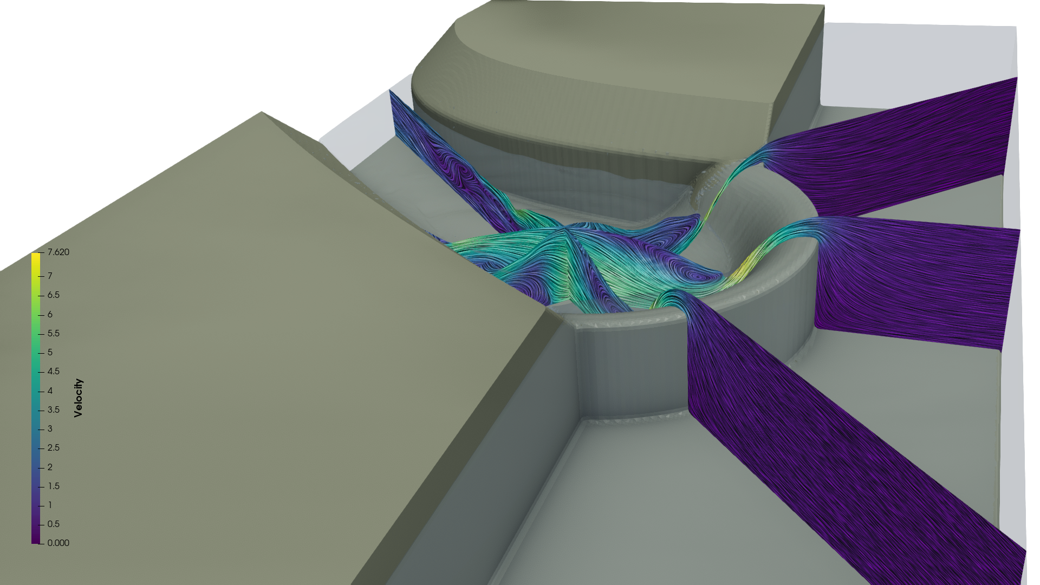
Version Up Training: FLOW-3D AM and FLOW-3D WELD
Instructor: Dr. Marcin Serdeczny
Time: 13:00-15:00
This training will showcase the new and streamlined FLOW-3D AM and FLOW-3D WELD products, detail the improvements and updates to the new user interfaces, and discuss modeling best practices. We will review typical setups of additive manufacturing and laser welding simulations, highlighting the importance of the different physical models such as recoil pressure, evaporation, and Fresnel absorption. Additionally, we will show how to employ FLOW-3D (x) to accelerate model development and laser process analysis.
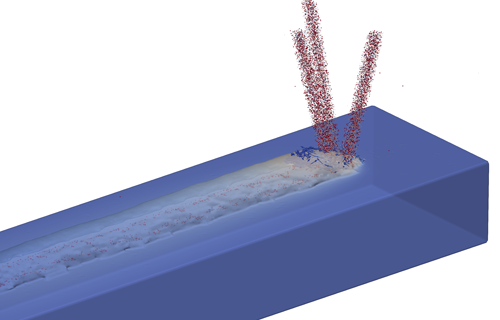
Exploring the New Results File in FLOW-3D POST
Instructors: Dr. Ryan Jones, Dr. Marcin Serdeczny, and Malte Leonard
Time: 15:30-17:30
Advanced training for FLOW-3D POST will be presented by a panel of application experts. The training will include an overview of post-processing using the new results file format and will highlight new features in the latest release. Effects of the different data structures on the post-processing workflow will be reviewed. Methods for getting the most out of FLOW-3D POST, including high quality graphics production and application-specific data extraction for FLOW-3D CAST, FLOW-3D HYDRO, and FLOW-3D AM will be demonstrated.
